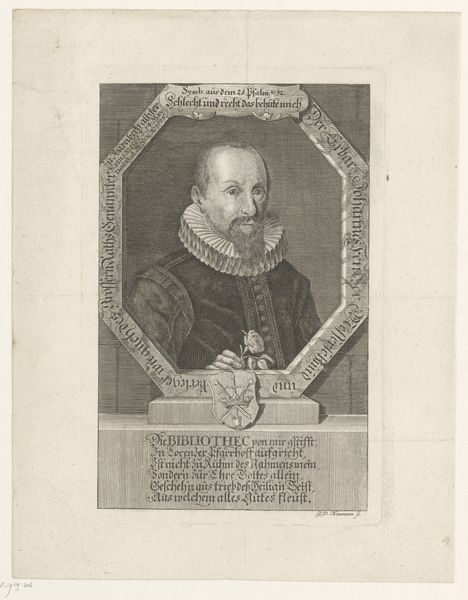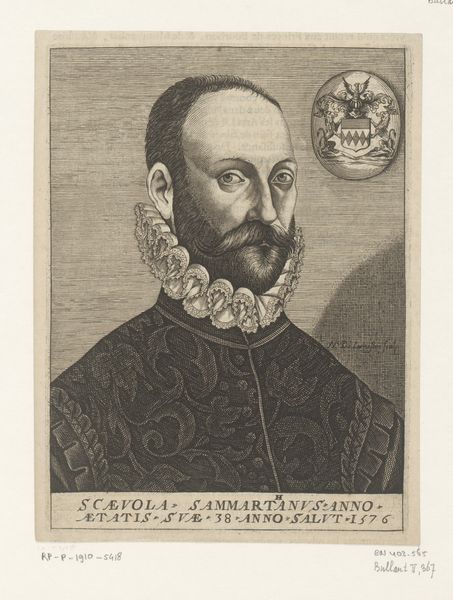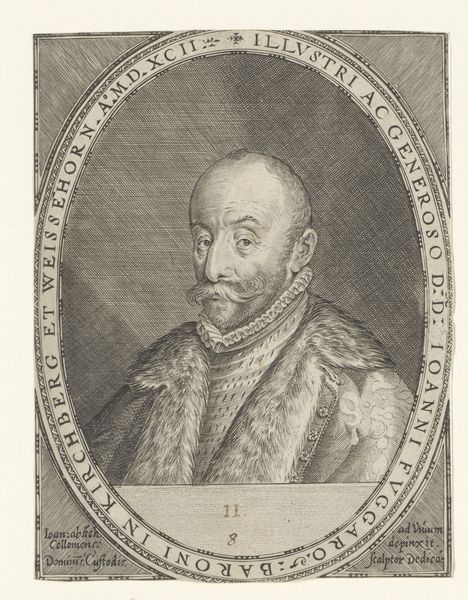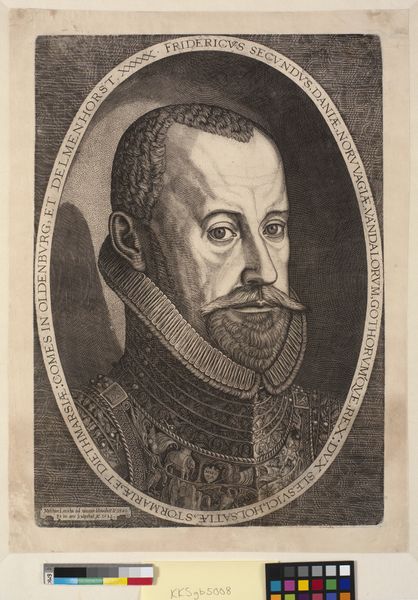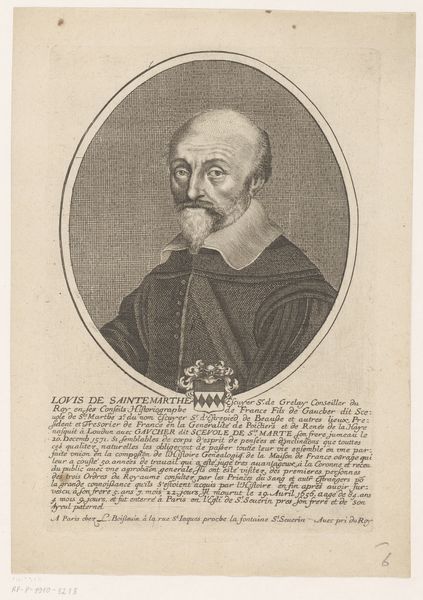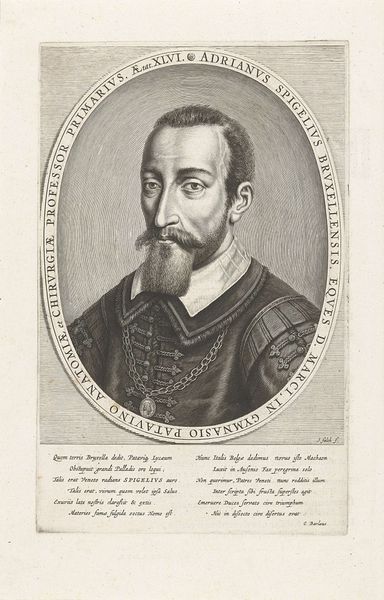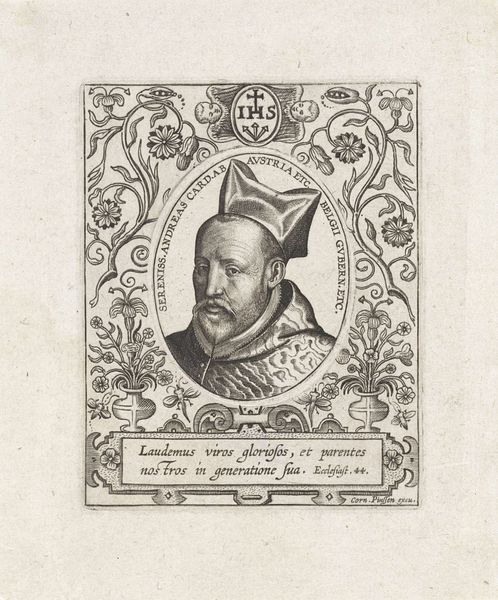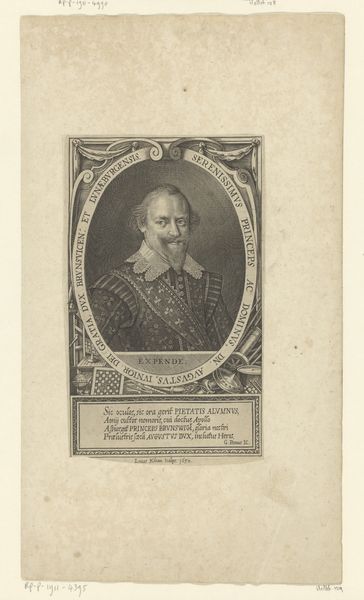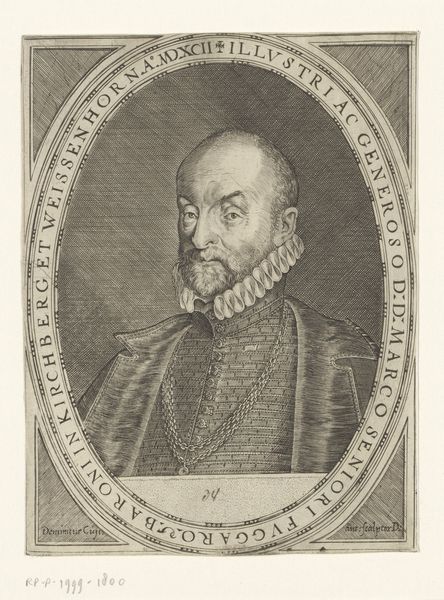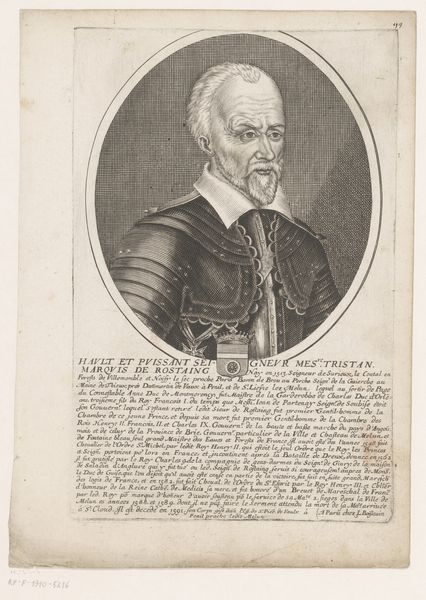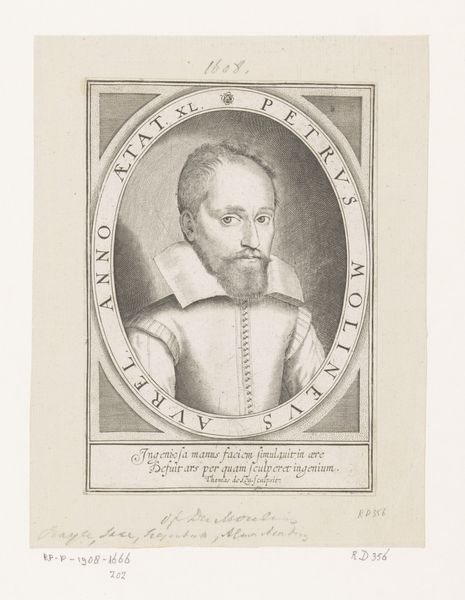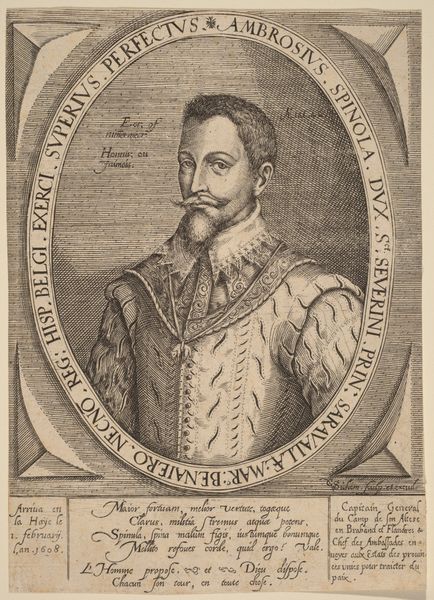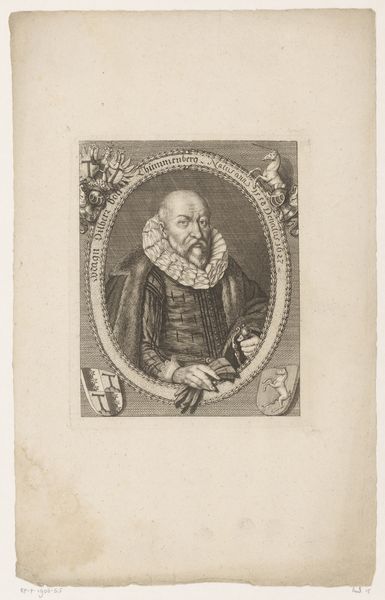
print, paper, ink, engraving
#
portrait
#
baroque
# print
#
old engraving style
#
paper
#
ink
#
engraving
Dimensions: height 191 mm, width 132 mm
Copyright: Rijks Museum: Open Domain
Editor: Here we have Pierre Daret's "Portrait of Scévole de Sainte-Marthe," an engraving from 1652, currently residing at the Rijksmuseum. I'm immediately struck by the formality of the piece; it really projects the sitter's importance through the detail in the ruff and coat of arms, combined with the stark monochrome. What do you see in this piece, particularly from a historical point of view? Curator: It’s a fascinating example of how prints functioned as powerful tools of image-making in the 17th century. Daret’s engraving provides insight into the construction of reputation and the circulation of visual propaganda. Sainte-Marthe was a significant figure. Now, what elements in the print do you think are most telling about Sainte-Marthe’s standing in society? Editor: Well, the text surrounding the portrait definitely makes a statement about his accomplishments – it almost seems like a resume etched into the page. And perhaps the inclusion of his coat-of-arms? Curator: Exactly. The lengthy inscription emphasizes his roles as President and Treasurer of France, as well as praising his service to the King. This text reinforces the power and social standing conveyed through the visual portrait, and demonstrates how such images solidified identity within specific socio-political frameworks. Consider how prints like these allowed the wider distribution of elite portraiture. The print is, in effect, performing a function of propaganda, disseminating his image, as well as a status report. Editor: That makes a lot of sense. It’s more than just a portrait; it's a carefully constructed statement about power and influence at a specific historical moment. Thank you! I definitely see this print in a completely different light now. Curator: Indeed. Understanding the social function of imagery encourages us to look beyond mere representation and consider how visual culture actively shaped perceptions of power, status and even national identity. This provides valuable perspective, wouldn’t you agree?
Comments
No comments
Be the first to comment and join the conversation on the ultimate creative platform.
